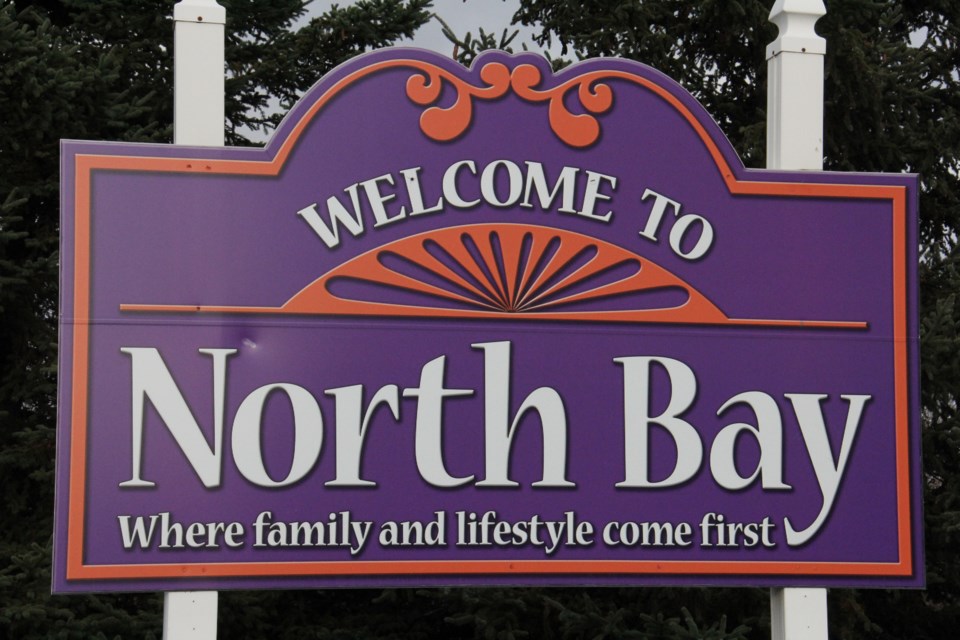By Don Curry
North Bay’s population is declining, but its immigrant population is slowly on the rise, according to demographic statistics recently released by Statistics Canada, based on the 2016 census.
While the city’s population declined 3.9 per cent from 2011 to 51,553, the number of immigrants in the city is now 2,745, or 5.4 per cent of the population.
Recent immigration by place of birth shows 45 newcomers arriving from India, 30 from Syria, 30 from the Philippines, 20 from China, 20 from Vietnam, 15 from Europe, 15 from Pakistan, 10 from Taiwan, 10 from Mexico and 10 from other countries in the Americas.
For immigrants arriving since 1980, 535 were economic class immigrants, 245 were principal applicants, 295 were secondary applicants, 575 were sponsored by their families and 135 were refugees.
The city has a First Nations population of 3,065, or 5.9 per cent, and a Métis population of 2,050, or 4 per cent. Senior citizens, those 65 and over, comprise 19.8 per cent of our population.
A sizeable number of the city’s immigrant population arrived before 1981, some 1,545 people. Another 265 arrived between 1981 and 1990; 275 between 1991 and 2000; and then a jump to 455 between 2001 and 2010. Breaking down that last number, 170 arrived between 2001 and 2005, and 290 between 2006 and 2010.
Between 2011 and 2016 another 205 immigrants made North Bay home. The North Bay & District Multicultural Centre at 100 Main St. E. helps settle immigrants from Parry Sound in the south to Hearst in the north. It has a satellite office in Timmins and coordinates the Local Immigration Partnership initiatives in both North Bay and Timmins.
The city’s economic development department established the North Bay Newcomer Network in 2004, the North Bay & District Multicultural Centre opened in 2008 and the city’s immigration portal, www.northbayimmigration.ca, was launched in 2009.
North Bay & District Multicultural Centre staff identified more than 70 first-generation immigrant-owned businesses in North Bay, including convenience stores, franchise operations, hotels, motels, restaurants, gas stations, dry cleaners, property development companies and more. There are many professionals as well, including doctors, veterinarians, dentists, engineers, and accountants.
The 2016 census shows North Bay has a visible minority population of 1,630 people. Of that total, 415 are South Asian, 350 are Chinese, 290 are Black, 125 are Latin American, 95 are Southeast Asian, 80 are Filipino, 55 are Arab, 50 are Japanese and 30 are Korean.
The census shows that North Bay has a French-speaking population of 12.8 per cent. The average age of city residents is 42.7 and the median age (the same number below that figure as above it) is 43.7. Interestingly, there are more than 2,000 more females living in the city than males.
Other languages spoken in the city apart from the two official languages are Afro-Asiatic languages, 35; Arabic, 30; Tagalog, 50; Bulgarian, 5; Croatian, 20; Czech, 30; Polish, 90; Russian, 40; Slovak, 5; Ukrainian, 45; Afrikaans, 10; Danish 10; Dutch, 75; German, 245; Norwegian, 5; Swedish, 5; Greek, 35; Bengali, 5; Gujarati,30; Hindi, 25; Konkani, 5; Marathi, 5; Punjabi, 25; Sinhalese, 10; Urdu, 50; Kurdish, 5; Pashto, 10; Farsi, 25; Italian, 445; Portuguese, 65; Romanian, 20; Spanish, 100; Japanese, 15; Korean, 20; Niger-Congo languages, 30; Mandarin, 80; Cantonese, 75; Turkish, 10; Estonian, 5; Finnish, 45; Hungarian, 30; and sign languages, 10.
The average income of North Bay households is $77,691, or $65,700 after tax. The average total income of one-person households is $38,729, and for two-person or more households it is $96,055, or $80,925 after tax.
Don Curry is chair of the board of directors of the North Bay & District Multicultural Centre.


.jpg;w=120;h=80;mode=crop)
